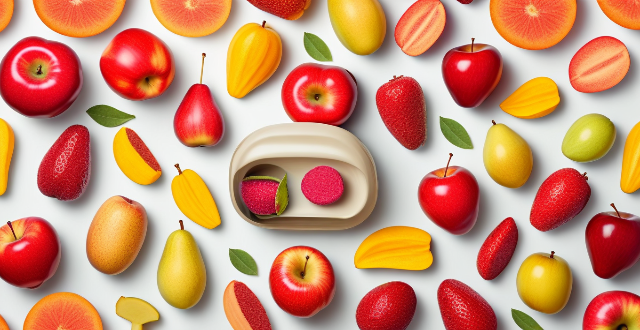Baking can be high in fat, but there are strategies to reduce the fat content in your baked goods. Substituting butter or oil with unsweetened applesauce is one easy way to cut down on fat. Using low-fat dairy products instead of full-fat ones also reduces the overall fat content. Egg whites can replace whole eggs for a lower-fat option. Incorporating fruit purees adds natural sweetness and moisture without adding fat. Sift dry ingredients before mixing for a lighter texture, potentially reducing the need for excess fats. Experiment with fat replacers, but be cautious as they may affect taste and texture. Increasing other ingredients like sugar, spices, or extracts can compensate for reduced fat content. Using cooking sprays instead of greasing pans with butter or oil saves fat. By implementing these strategies, you can enjoy delicious treats while significantly reducing the fat content in your baking.

How to Reduce the Fat Content in Your Baking
Baking is a delightful way to create delicious treats, but it can also be high in fat. If you're looking to cut down on the fat content in your baked goods, there are several strategies you can employ. Here are some tips to help you reduce the fat in your baking:
1. Use Applesauce Instead of Butter or Oil
One of the easiest ways to reduce fat in your baking is by substituting butter or oil with unsweetened applesauce. This works especially well in recipes like cakes, muffins, and brownies. The applesauce adds moisture without adding significant fat.
- Pro Tip: Start by replacing half of the fat called for in the recipe with applesauce and adjust to taste.
2. Choose Low-Fat Dairy Products
When a recipe calls for milk, cream, or yogurt, opt for low-fat or non-fat versions. This simple swap can significantly reduce the overall fat content.
- Example: Instead of using whole milk, use skim or 1% milk. For cream, consider using a combination of milk and cornstarch to replicate the creamy texture.
3. Use Egg Whites Instead of Whole Eggs
Eggs are a common ingredient in many baked goods, but the yolks contain most of the fat. By using only egg whites, you can reduce the fat content while still benefiting from the binding and leavening properties of eggs.
- Recipe Adjustment: For every whole egg called for in a recipe, use two egg whites as a substitute.
4. Incorporate Fruit Purees
Similar to applesauce, pureed fruits like bananas, peaches, or pumpkin can replace some of the fat in your recipes. These purees add natural sweetness and moisture without adding fat.
- Application: Puree ripe fruits and use them in place of some of the butter or oil. Adjust the amount based on the consistency of your batter.
5. Sift Dry Ingredients
Sifting dry ingredients like flour, baking powder, and cocoa powder before mixing ensures they are evenly distributed and helps create a lighter texture, potentially allowing you to use less fat.
- Benefit: Well-sifted ingredients can make your baked goods fluffier, reducing the need for excess fats to achieve a tender texture.
6. Experiment with Fat Replacers
There are various fat replacers available on the market designed specifically for baking. These products mimic the texture and flavor of fats but contain fewer calories.
- Consideration: Be cautious when using these products, as they can affect the taste and texture of your final product. Always follow the instructions provided by the manufacturer.
7. Increase Ratio of Other Ingredients
Increasing the proportion of other ingredients, such as sugar, spices, or extracts, can help compensate for the reduced fat content and enhance the flavor of your baked goods.
- Flavor Enhancement: Adding more vanilla extract or cinnamon, for example, can make up for any lost flavor due to reduced fat.
8. Use Cooking Sprays
Instead of greasing your pans with butter or oil, use a non-stick cooking spray. This small change can save a surprising amount of fat over time.
- Pan Preparation: A light coating of cooking spray will prevent your baked goods from sticking without adding extra fat.
By implementing these strategies, you can significantly reduce the fat content in your baking while still enjoying delicious treats. Remember, it's all about finding the right balance and experimenting to find what works best for your specific recipes and tastes.